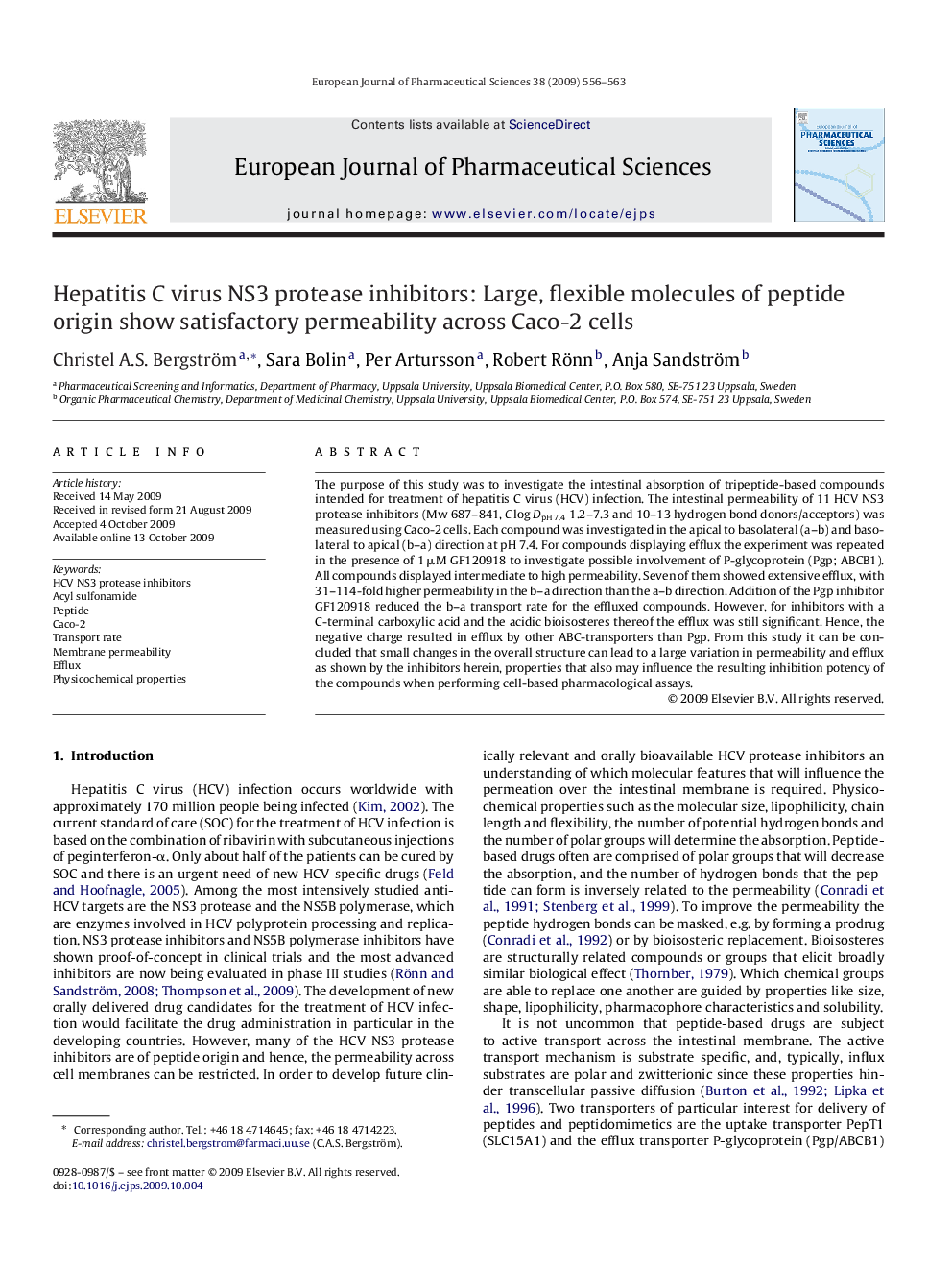| Article ID | Journal | Published Year | Pages | File Type |
|---|---|---|---|---|
| 2482186 | European Journal of Pharmaceutical Sciences | 2009 | 8 Pages |
The purpose of this study was to investigate the intestinal absorption of tripeptide-based compounds intended for treatment of hepatitis C virus (HCV) infection. The intestinal permeability of 11 HCV NS3 protease inhibitors (Mw 687–841, C log DpH 7.4 1.2–7.3 and 10–13 hydrogen bond donors/acceptors) was measured using Caco-2 cells. Each compound was investigated in the apical to basolateral (a–b) and basolateral to apical (b–a) direction at pH 7.4. For compounds displaying efflux the experiment was repeated in the presence of 1 μM GF120918 to investigate possible involvement of P-glycoprotein (Pgp; ABCB1). All compounds displayed intermediate to high permeability. Seven of them showed extensive efflux, with 31–114-fold higher permeability in the b–a direction than the a–b direction. Addition of the Pgp inhibitor GF120918 reduced the b–a transport rate for the effluxed compounds. However, for inhibitors with a C-terminal carboxylic acid and the acidic bioisosteres thereof the efflux was still significant. Hence, the negative charge resulted in efflux by other ABC-transporters than Pgp. From this study it can be concluded that small changes in the overall structure can lead to a large variation in permeability and efflux as shown by the inhibitors herein, properties that also may influence the resulting inhibition potency of the compounds when performing cell-based pharmacological assays.
